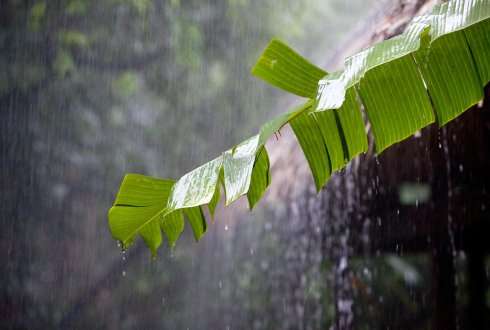Irrigation can give rise to increased precipitation

PhD candidate Obbe Tuinenburg defended his doctoral thesis on the 15th of April, 2013. His research related to the effects of large-scale irrigation in India on the atmosphere and rainfall. One of the conclusions of this research is that a small increase in irrigation during the months directly before and after the monsoon season can give rise to increased precipitation in the same catchment basin. His doctoral thesis supervisor is Pavel Kabat. His co-supervisor is Ronald Hutjes.
In monsoon areas such as India, precipitation is strongly linked to the season. Almost all the precipitation occurs in a few months of each year. In order to maintain an adequate supply of water during the rest of the year, the rain falling during the monsoon period can be stored in reservoirs. During the dry periods, this can be transported to areas in which it is needed. Previous studies that made use of large-scale hydrological models have demonstrated that human interventions (e.g. dams and reservoirs) in the hydrological cycle result in reduced river discharge during the monsoon months and increased evaporation during the dry months. However, the effects of a changing land surface (as a result of large-scale irrigation) on the atmosphere were not included in these models. Obbe has now taken account of these effects in his doctoral research.
'I have approached the atmospheric effects of large-scale irrigation in India from various perspectives. I have looked at the effects of a wetter land surface on the occurrence of precipitation, at the effect of evaporation on precipitation and at the effects of a wetter land surface on the monsoon circulation. My main conclusion is that in the two months before and the two months after the monsoon season a small increase in irrigation can result in increased precipitation. Moreover, around 40 to 60 per cent of the evaporation from irrigation fields during that period comes back as precipitation within the catchment basin of the Ganges, and can therefore potentially be reused. However, if irrigation is used on a large scale, the monsoonal flows may change, leading to decreased precipitation in the Ganges catchment basin.
'A differentiation should be made in this regard, says Obbe: 'The atmospheric effects of irrigation that have emerged in this study are small in scale compared with the hydrological effects of human interventions, as simulated with the aid of a number of large-scale hydrological models. Moreover, the results of these hydrological models show considerable variation, particularly in comparison with the consensus seen in the large-scale atmospheric models. I therefore believe it is good to first improve the large-scale hydrological models and to reduce their uncertainties before the effects of land use change on the precipitation can be taken into account.
Provided by Wageningen University
















